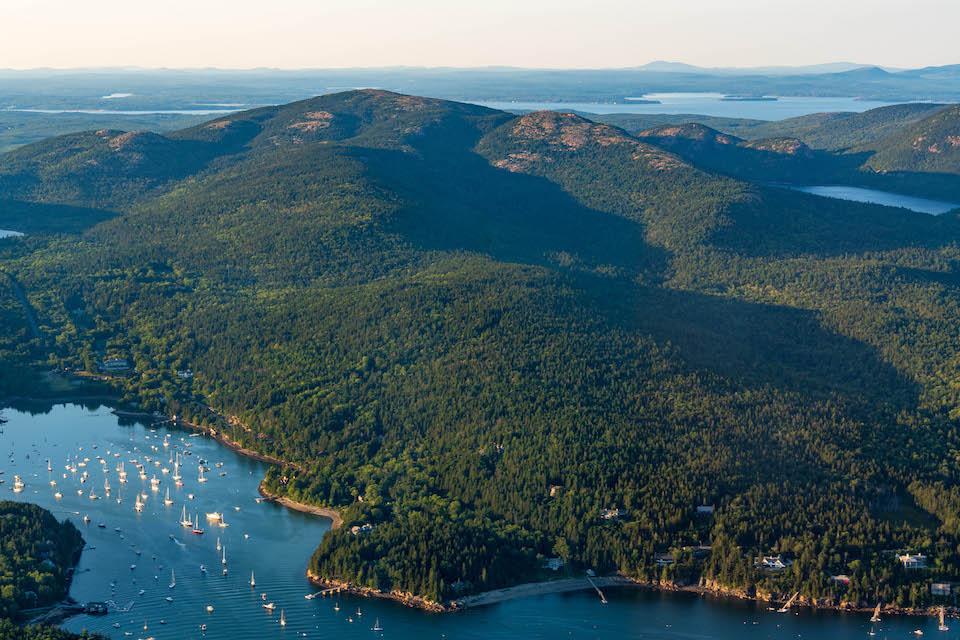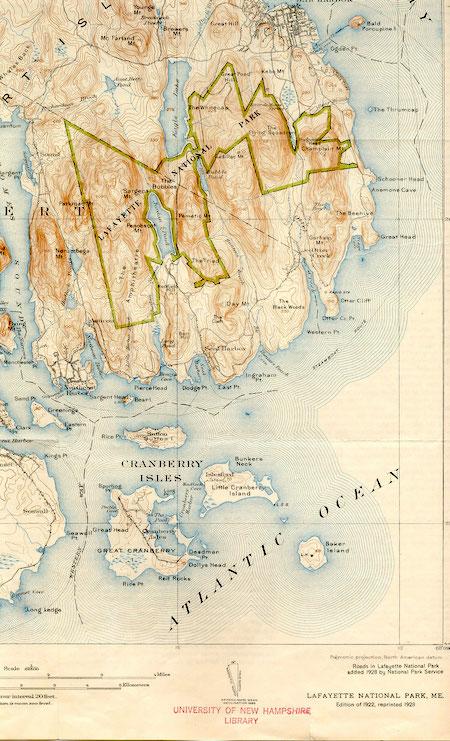
Aerial view of Acadia National Park/Friends of Acadia
Editor's note: The following article was written by Earl Brechlin, communications director for Friends of Acadia.
Lands on Mount Desert Island that were the precursor to today’s Acadia National Park have been protected by the federal government since 1916. That is why the park celebrated its Centennial in 2016. But on February 26, the park will mark an important milestone in the process that resulted in what millions of visitors enjoy today.
Sieur de Monts National Monument was established by President Woodrow Wilson on July 8, 1916. Three years later, on February 26, 1919, it was re-designated by Congress as Lafayette National Park. That vote created the very first "national park" east of the Mississippi River. Grand Canyon National Park was established by Congress on the same day.
According to the Congressional Record for that date, the monument “is hereby declared to be a national park and dedicated as a public park for the benefit and enjoyment of the people under the name Lafayette National Park.” The park was named for the Marquis de Lafayette, a French aristocrat and military officer who helped fight the British during the American Revolution.

Lafayette National Park map/Friends of Acadia
A decade later, the name was changed to Acadia on January 19, 1929.
From humble beginnings the preserve has grown ten-fold to where Acadia, now at nearly 50,000 acres, remains the only national park created largely through the donation of private lands from a group of citizens to the federal government.
National monuments are designated to protect wilderness or places and objects of cultural, historic and scientific significance. National parks, which often have more strict rules concerning economic and recreational activities, are created for protecting land and waters for their scenic, educational, recreational and inspirational values.
Many national parks started out as national monuments. While Maine has only one national park—Acadia—the Katahdin Woods and Waters National Monument was created by President Barack Obama in 2016 after more than 87,000 acres in Northern Maine was given to the government by charitable foundations established by conservationist Roxanne Quimby.
In Acadia’s case, a group of seasonal and year-round residents worked together to create the Hancock County Trustees for Public Reservations to begin collecting land for the monument. Among the pivotal figures were three people considered to be the founders of the park, George B. Dorr, Charles W. Eliot, and John D. Rockefeller, Jr.
“It’s important to remember that magnificent and special places such as Acadia are not established overnight,” said Friends of Acadia President David MacDonald. “It required an incredible effort to establish that National Monument, later designate it as a National Park and proceed from there to create the special place we all enjoy today,” he continued.
Going forward, the pressures of increasing visitation, climate change, and the need to address long-delayed infrastructure improvements, pose an evolving set of challenges for the park’s future.
“This milestone is a good time to remind ourselves of the commitment that is required to ensure that Acadia is protected and preserved for the next 100 years,” MacDonald added.
Find out more at www.friendsofacadia.org.
Friends of Acadia preserves, protects, and promotes stewardship of the outstanding natural beauty, ecological vitality, and distinctive cultural resources of Acadia National Park and surrounding communities for the inspiration and enjoyment of current and future generations.



Add comment